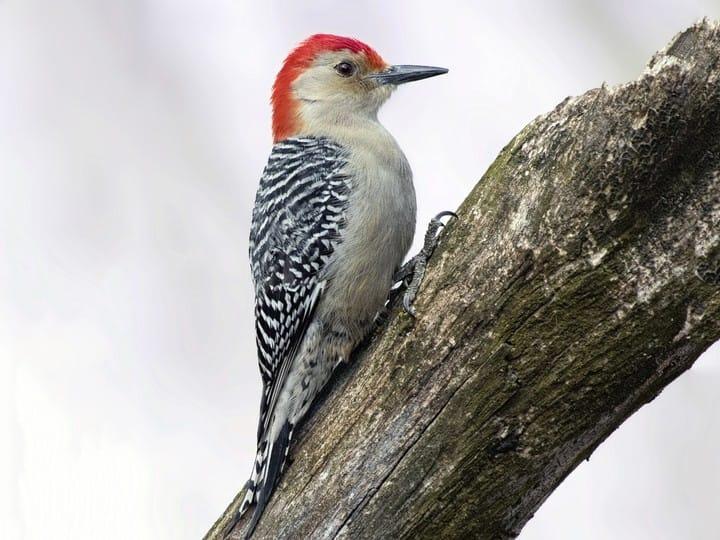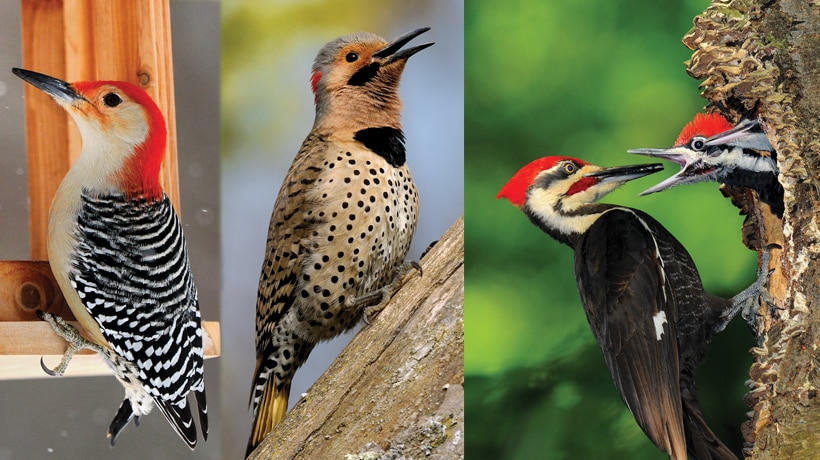Coming Across Woodpeckers in Florida: Species Variety and Recognition
Coming Across Woodpeckers in Florida: Species Variety and Recognition
Blog Article
Discover the Remarkable Globe of Woodpeckers: Whatever You Need to Know
The world of woodpeckers is a world full of one-of-a-kind actions, complex adaptations, and a diverse selection of types. From their habitats and distribution patterns to their feeding habits and specialized physiological functions, woodpeckers have long astounded the rate of interest of ornithologists and nature enthusiasts alike. Recognizing the details of these interesting birds provides a glance into the intricate interaction between their biology and the setting. As we check out the world of woodpeckers additionally, we uncover a wide range of info that clarifies their relevance in environments and the obstacles they face in an ever-changing globe.
Woodpecker Habitats and Circulation
Woodpeckers inhabit a diverse variety of settings worldwide, showcasing adaptability in their circulation patterns. These resistant birds are located in woodlands, woodlands, savannas, and deserts across various continents, demonstrating their capability to prosper in various weather problems. In The United States and Canada, as an example, woodpeckers can be spotted in both coniferous and deciduous woodlands, using their solid beaks to forage for bugs and develop nesting dental caries in trees. In Africa, specific woodpecker types have adapted to arid environments, such as the acacia woodlands, where they play an essential function in controlling insect populations.

Feeding Behaviors and Diet
Woodpeckers utilize their solid beaks to drill into the bark of trees, probing for insects and larvae concealed beneath the surface. In enhancement to pests, woodpeckers additionally take in nuts, seeds, fruits, and sap.
Woodpeckers are understood for their drumming habits, which serves not only to interact with other woodpeckers but additionally to situate food. The fast drumming noise is created check here by the bird pecking on resonant surfaces like dead trees or steel posts. This habits can attract pests concealed in the wood, enabling the woodpecker to identify their visibility and eat them.
Distinct Adaptations for Tree Climbing
In their adept quest of pests hidden within tree bark, woodpeckers have developed impressive anatomical functions that equip them with distinct adjustments for reliable tree climbing. Woodpeckers have solid neck muscular tissues and an unique skull framework that absorb the impact of continuous pecking, permitting them to climb vertically without triggering injury to their brains. These adjustments display the amazing evolutionary design that enables woodpeckers to navigate trees with precision and efficiency.
Diverse Woodpecker Species Worldwide
With over 200 different types spread across different habitats worldwide, the household of Picidae encompasses an impressive variety of woodpeckers. These birds can be found in forests, woodlands, savannas, and even metropolitan locations, showcasing their adaptability to various settings. From the legendary Northern Flicker in The United States And Canada to the vivid and evasive Crimson-backed Flameback in Asia, each woodpecker types displays distinct qualities in terms of tuft, habits, and habitat preference.
Woodpeckers vary significantly in size, with the diminutive Downy Woodpecker gauging around 6-7 inches in size, while the powerful Lineated Woodpecker can reach up to 17 inches - Woodpeckers in useful link Florida. Their beaks additionally can be found in various forms and sizes, reflecting their feeding behaviors. Some types focus on removing bugs from tree bark, like the Acorn Woodpecker, while others, such as the Black-cheeked Woodpecker, feed upon fruits and seeds

Conservation Efforts and Difficulties
Preservation campaigns for woodpecker populations are essential in minimizing the impact of habitat loss and other risks encountering these varied bird varieties. Woodpeckers face various difficulties to their survival, mostly as a result of logging, urbanization, climate change, and invasive species. To attend to these concerns, preservation initiatives focus on safeguarding and bring back woodpecker habitats, executing sustainable forestry practices, and increasing understanding regarding the significance of these birds in environments.
One considerable difficulty in woodpecker conservation is the fragmentation of their habitats, leading to isolated populaces that are extra at risk to termination - Woodpeckers in Florida. Preservationists function to produce wildlife passages and safeguarded areas that connect these fragmented environments, permitting woodpeckers to relocate between different areas for feeding, reproducing, and shelter
:max_bytes(150000):strip_icc()/GettyImages-1094628502-a831e9c1be004c05b057f488ff819127.jpg)
Final Thought
In conclusion, woodpeckers are fascinating birds with unique adaptations for tree climbing and feeding actions. browse around this web-site More study and conservation activities are required to make certain the survival of woodpeckers in the wild.
Report this page